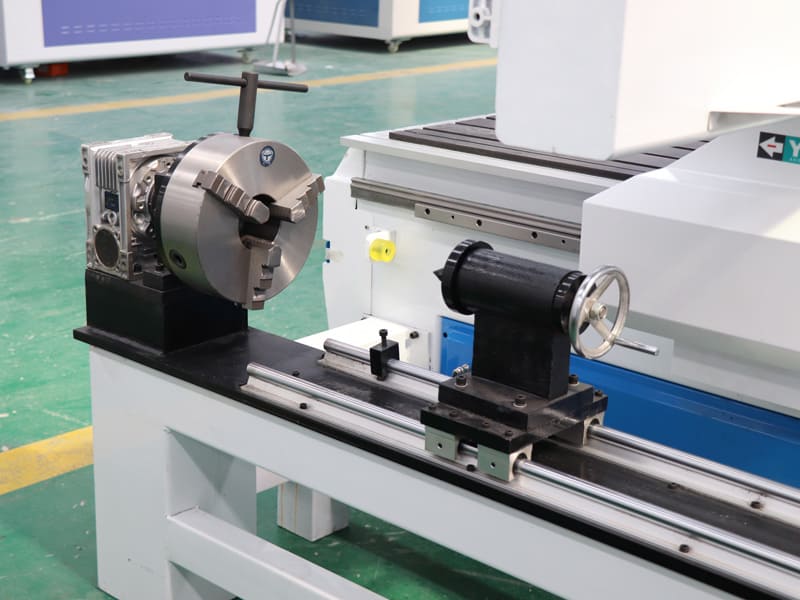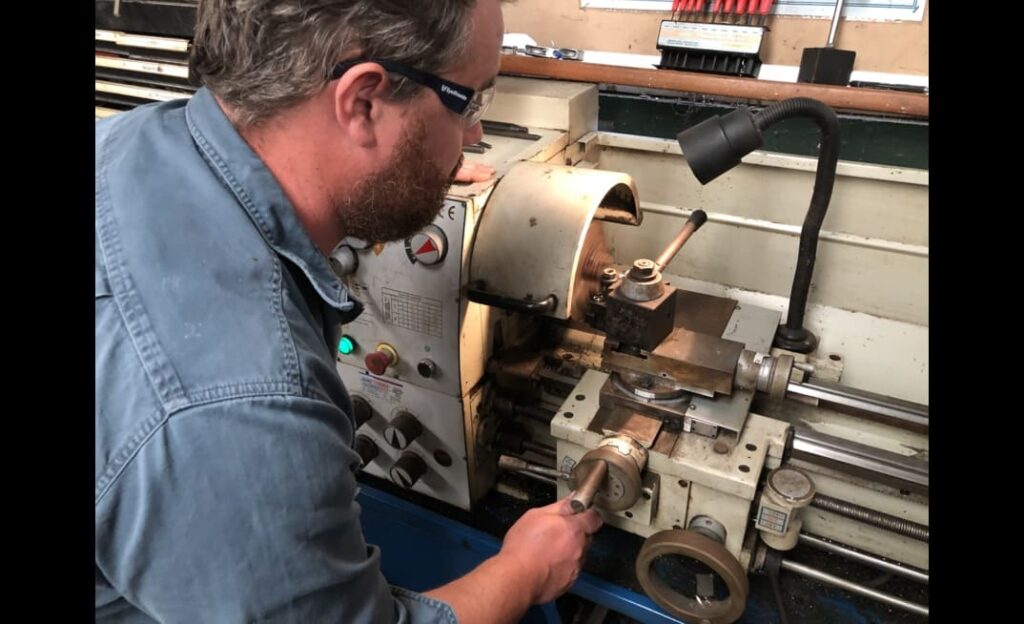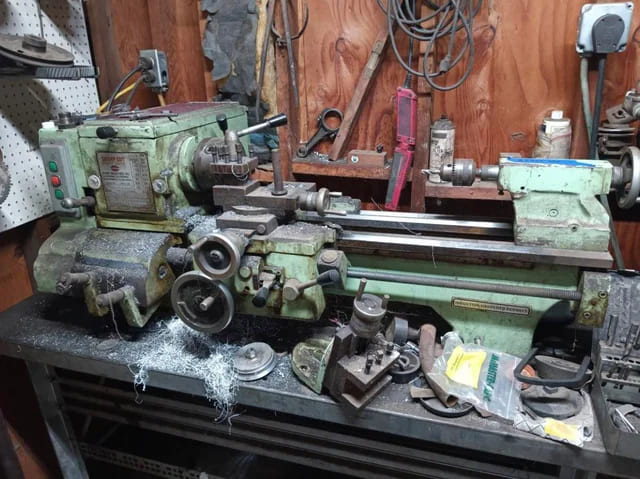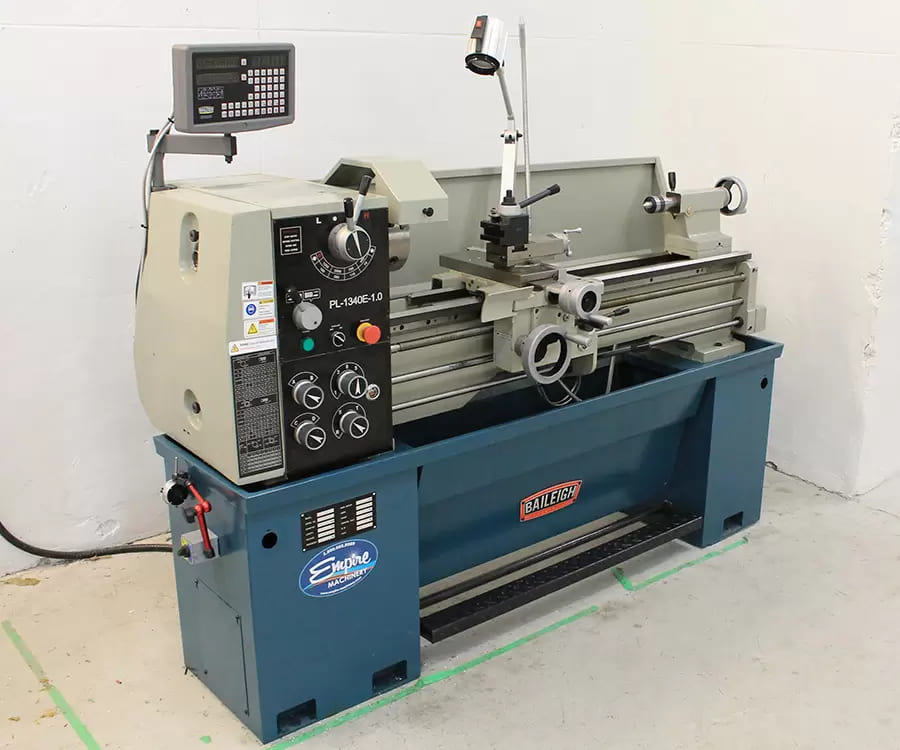How to use a metal lathe?
In the field of industrial manufacturing, metal lathes, as a powerful tool, provide people with the possibility of transforming metal materials into exquisite works. This article will introduce the use of metal lathes in detail for beginners, helping everyone to smoothly start their metal processing journey.
1.The importance of metal lathes
With the development of the manufacturing industry, more and more people have begun to pay attention to metal processing. As one of the important tools for metal processing, the functions and uses of metal lathes have attracted much attention. Whether in factory workshops or home workshops, they can play a huge role. For beginners, it is crucial to understand the usage and precautions.

2.Features of Metal Lathes
1.Versatility: can make a variety of items, from tiny screws to complex masterpieces.
2.High precision: can engrave metal workpieces with laser-like precision.
3.Wide application: not only used by machinists and engineers, but also favored by artists.
3.Items that can be made on a metal lathe
(i) Bolts and nuts
No longer have to worry about finding the right nuts or bolts. You can easily make the screws you need with a metal lathe.
(ii) Metal hammer
Making a metal hammer is a challenging task, especially for beginners. You can start by making the mallet-shaped head of the metal hammer and gradually improve your skills.

(iii) Metal ring
Make a special gift for someone special and use a metal lathe to engrave a metal ring to improve your metalworking skills.
(iv) Metal scriber
No need to buy it, make a metal scriber yourself to meet the needs of DIY projects.
(v) Axles and axles
Using the rotation function of the lathe, you can easily make cylindrical objects, such as the axle or shaft rod of a go-kart.
(vi) Custom tools
Make custom tools for the workshop, such as custom wrenches or tool key chains.
4.Steps to set up a metal lathe
(i) Find a suitable location
Choose a flat, level and solid location for the lathe, and clean the surrounding area to ensure a safe operating environment.
(ii) Provide reliable power
Connect a reliable power source according to the manual requirements of the metal lathe, pay attention to the specific voltage and plug type, and ground the lathe to prevent electric shock.

(iii) Leveling
Use a level to ensure that the lathe is completely leveled, and check whether the tailstock is aligned with the spindle box to ensure processing accuracy and reduce wear.
(iv) Choose a suitable chuck
Choose a suitable chuck according to the metal bar being used, ensure that it clamps the metal bar tightly and is completely centered to ensure processing stability.
(v) Select engraving tools
Different metal engraving tools are used for different types of cutting. Choose the appropriate cutting tool according to the project requirements and pay attention to using it at the correct angle.
(vi) Lubrication
Before using the metal lathe for the first time, oil the parts that need lubrication, but be careful not to over-lubricate to avoid attracting dust and debris.
(vii) Safety check
Before starting to use, carefully check that all connections are secure and there is no shaking to ensure safe operation.
5.Operation process of metal lathe
(i) Install the workpiece
Use the chuck to install the workpiece on the lathe and install the chuck guard (if the machine has one) to ensure that the workpiece is firmly fixed.
(ii) Adjust the tailstock
After installing the workpiece, adjust the tailstock to make it perfectly centered with the workpiece to ensure machining accuracy.
(iii) Install the cutting tool
Choose the appropriate cutting tool according to the project requirements, such as a parting tool, a round head tool, or a center tool, and use it at the correct angle.
(iv) Select the rotation direction
Choose counterclockwise or clockwise rotation direction according to the operation requirements to ensure the machining effect.

(v) Start slowly
When using the machine for the first time, start at a low speed, maintain the spindle speed, and use the engraving tool for slight movements to avoid excessive pressure that may damage the lathe or workpiece.
(vi) Turn on the power
For metal lathes with power feed function, use the lever, knob, or button marked as power feed to adjust the feed rate and direction according to the workpiece.
VI. Safety measures
(I) Wear tight clothing
Avoid loose sleeves or dangling jewelry from being caught in moving parts to ensure safe operation.
(II) Wear protective equipment
Including safety glasses and closed-toe shoes to protect important parts of the body.
(III) No gloves
Although gloves can provide some protection, they will affect the flexibility of operation and are not recommended.
(IV) Keep a safe distance
Keep a safe distance from moving parts, paying special attention to the position of your arms and hands to prevent accidents.
(V) Check protective devices
Carefully check that all protective devices are in place and everything is properly fixed to ensure safe operation.
(VI) Handling abnormal situations
If the lathe makes any strange noises, stop operation immediately to ensure safety.
Conclusion
As a powerful metal processing tool, the metal lathe provides a broad creative space for beginners. Understanding the metal lathe setting steps, operation procedures and safety measures can help beginners better master it.
When using a metal lathe, you must keep safety in mind, choose a metal lathe that suits you, and keep practicing and exploring. I believe you will be able to create exquisite metal works.
